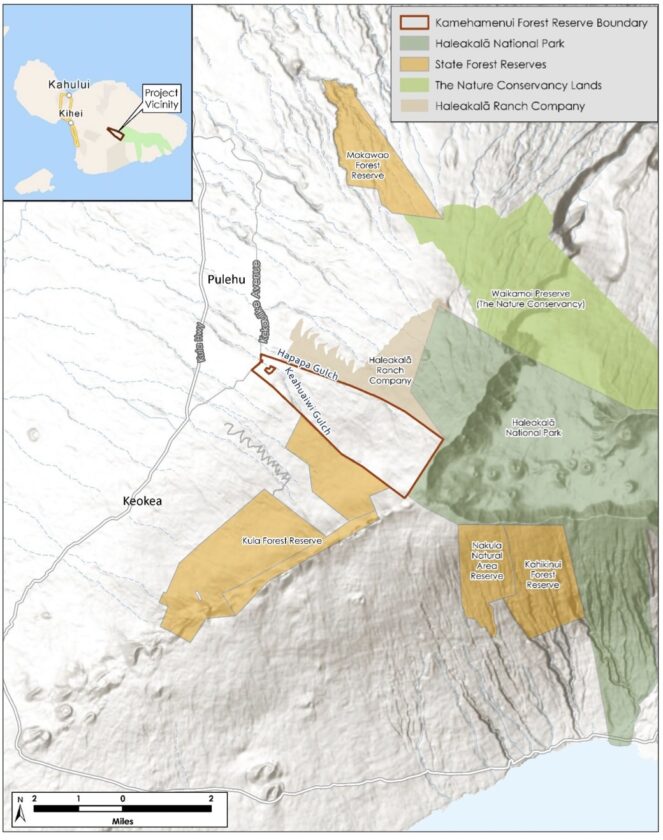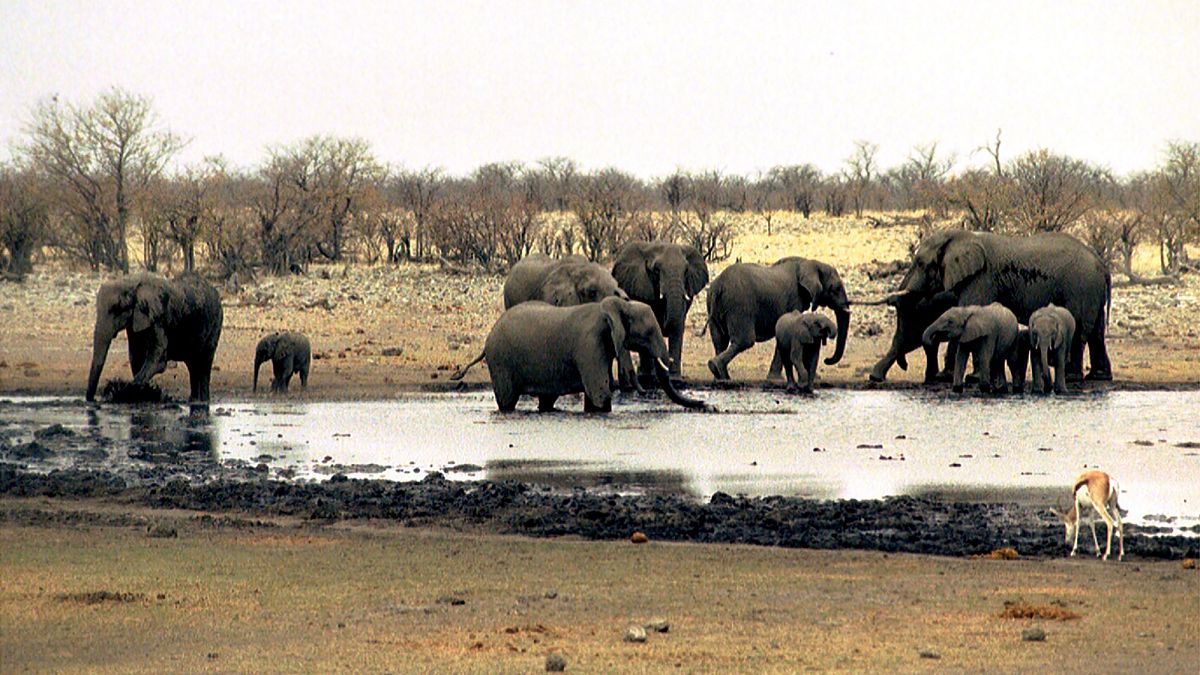Report on Maui’s Water Crisis and its Implications for Sustainable Development Goals
1.0 Executive Summary
The island of Maui, Hawaii, is currently experiencing a severe water crisis, prompting officials to declare a Stage 3 water shortage for the Upcountry region. This situation, driven by a prolonged and worsening drought, has necessitated the implementation of stringent mandatory water conservation measures. The crisis and the subsequent response have significant implications for several of the United Nations’ Sustainable Development Goals (SDGs), particularly those concerning water management, climate action, and sustainable communities.
2.0 Analysis of the Water Shortage
The severity of the drought is underscored by official data and projections. This section outlines the current conditions and the administrative response.
- Drought Conditions: Approximately 70% of the Hawaiian Islands are experiencing some level of drought, with the entirety of western Maui classified under “severe” drought conditions according to the U.S. Drought Monitor.
- Precipitation Deficit: The Kahului region has recorded only 0.28 inches of rainfall since May 1, exacerbating the water scarcity.
- Supply and Demand Imbalance: Water management authorities project that current consumption rates will exceed the available water supply by 31% or more, creating an unsustainable deficit that directly threatens the community’s access to water, a key target of SDG 6 (Clean Water and Sanitation).
3.0 Implemented Conservation Measures
In response to the crisis, Maui County has enacted a series of mandatory restrictions to curb water usage. These measures are critical for short-term water supply management but also highlight the challenges in achieving long-term sustainable consumption patterns as outlined in SDG 12 (Responsible Consumption and Production).
- Prohibition of Non-Essential Use: All non-essential water use for commercial and industrial purposes must cease.
- Irrigation Ban: The irrigation of all turf grass is now prohibited. This includes parks, schools, and recreational fields.
- Restrictions on Personal Use: Personal vehicle washing is forbidden.
- Limited Agricultural/Horticultural Watering: The watering of plant containers, trees, shrubs, and vegetable gardens is restricted to one day per week and must be done using only drip irrigation or by hand.
Violations of these restrictions carry significant penalties, including a $500 fine per offense and the potential for disconnection from the water supply for repeat offenders.
4.0 Impact on Sustainable Development Goals (SDGs)
The Maui drought crisis serves as a case study on the interconnectedness of environmental stability and sustainable development. The impacts extend beyond water management and affect economic, social, and environmental goals.
- SDG 6: Clean Water and Sanitation: The core of the crisis relates to the failure to ensure the availability and sustainable management of water. The restrictions are a reactive measure to a critical shortage, emphasizing the need for proactive and resilient water infrastructure and management strategies.
- SDG 13: Climate Action: The intensifying drought is a direct manifestation of climate change impacts. This event underscores the urgent need for comprehensive climate action to mitigate the frequency and severity of such extreme weather events that threaten communities globally.
- SDG 11: Sustainable Cities and Communities: The restrictions on irrigating public spaces like parks and school fields impact community well-being and social infrastructure. A sustainable community must be resilient to climate shocks, including water scarcity.
- SDG 8: Decent Work and Economic Growth: The cancellation of the 2026 PGA Tour’s Sentry tournament is a significant economic blow. The event is a major source of tourism revenue and employment. This demonstrates how environmental degradation and resource scarcity can directly undermine economic stability and growth.
- SDG 15: Life on Land: While the immediate focus is on human water consumption, prolonged drought severely impacts terrestrial ecosystems, threatening local biodiversity and the health of the island’s natural habitats.
5.0 Outlook
The water restrictions in Maui will remain in effect until the water supply levels improve. This ongoing situation highlights the critical vulnerability of island ecosystems to climate change and the pressing need to integrate sustainable resource management into all levels of planning and policy to achieve the Sustainable Development Goals.
Analysis of Sustainable Development Goals in the Article
1. Which SDGs are addressed or connected to the issues highlighted in the article?
-
SDG 6: Clean Water and Sanitation
The entire article focuses on a severe water shortage in Maui, Hawaii, due to an ongoing drought. It details the declaration of a “stage 3 water shortage,” the implementation of mandatory water conservation measures, and the imbalance between water use and available supply. This directly addresses the core themes of water availability, sustainable management of water resources, and water scarcity, which are central to SDG 6.
-
SDG 11: Sustainable Cities and Communities
The article describes how the water crisis impacts the community of Maui. The restrictions affect residents (prohibition on washing cars), public spaces (no irrigation for parks and schools), and local infrastructure. The government’s response through official declarations and fines is a measure to make the community more resilient to water-related disasters like drought, which aligns with the goals of SDG 11.
-
SDG 13: Climate Action
The root cause of the water shortage is identified as an “ongoing drought.” The article cites the U.S. Drought Monitor, which classifies parts of Maui as being in “severe” drought. Drought is a climate-related natural hazard, and the community’s response through water restrictions represents an adaptive measure to combat the impacts of climate change, connecting the issue directly to SDG 13.
-
SDG 15: Life on Land
The water restrictions have a direct impact on terrestrial ecosystems and land use. The article explicitly mentions the prohibition on irrigating “turf grass,” “parks, schools and recreation fields,” and limitations on watering “plant containers, trees, shrubs and vegetable gardens.” This highlights the stress on local flora and the measures taken to manage land-based ecosystems under severe drought conditions, which is relevant to SDG 15.
-
SDG 8: Decent Work and Economic Growth
The article highlights a significant economic consequence of the drought: the cancellation of the PGA Tour’s Sentry golf tournament. This decision was made because the water restrictions “significantly compromised” the course conditions. The cancellation represents a direct economic loss for the local community, affecting tourism, jobs, and revenue associated with the major sporting event, linking the environmental issue to economic stability and growth.
2. What specific targets under those SDGs can be identified based on the article’s content?
-
Target 6.4: By 2030, substantially increase water-use efficiency across all sectors and ensure sustainable withdrawals and supply of freshwater to address water scarcity.
The article directly relates to this target by describing Maui’s efforts to manage water scarcity. The implementation of “mandatory water conservation measures,” restrictions on “nonessential water use for commercial and industrial use,” and the projection that “current water use will exceed the available water supply by 31% or more” all point to the urgent need to increase water-use efficiency and manage freshwater supplies sustainably.
-
Target 11.5: By 2030, significantly reduce the number of deaths and the number of people affected and substantially decrease the direct economic losses relative to global gross domestic product caused by disasters, including water-related disasters.
The drought is a water-related disaster affecting the people of Maui through strict water use rules. The article provides a clear example of direct economic loss by stating that the PGA Tour was forced to cancel its tournament in Maui due to the drought’s impact on the golf course. This cancellation is a measurable economic loss for the community.
-
Target 13.1: Strengthen resilience and adaptive capacity to climate-related hazards and natural disasters in all countries.
The actions taken by Maui officials, such as declaring a “stage 3 water shortage” and imposing restrictions and fines, are direct examples of a community building resilience and adapting to a climate-related hazard (drought). These policies are designed to manage the immediate crisis and conserve resources for the future.
-
Target 15.3: By 2030, combat desertification, restore degraded land and soil, including land affected by desertification, drought and floods, and strive to achieve a land degradation-neutral world.
The article’s reference to data from the U.S. Drought Monitor, stating that “70% of the entire Hawaiian Islands are in some measure of drought” and “All of western Maui is considered in ‘severe’ drought,” highlights the issue of land degradation due to drought. The compromised condition of the golf course is a specific example of land being affected by this phenomenon.
3. Are there any indicators mentioned or implied in the article that can be used to measure progress towards the identified targets?
- Indicator for Target 6.4 (Level of water stress): The article provides a direct quantitative measure of water stress. It states that “Water managers project that current water use will exceed the available water supply by 31% or more.” This percentage is a clear indicator of the high level of water stress in the Upcountry area of Maui.
- Indicator for Target 11.5 (Direct economic loss attributed to disasters): A specific indicator of economic loss is mentioned: the cancellation of the PGA Tour’s Sentry tournament. While a dollar amount is not provided, the cancellation of a major international sporting event is a significant and measurable economic loss for the local tourism and service industries.
- Indicator for Target 13.1 (Adoption of national and local disaster risk reduction strategies): The article implies this indicator through its description of the government’s response. The declaration of a “stage 3 water shortage” and the list of “mandatory water conservation measures” serve as evidence of a local disaster risk reduction strategy being implemented to manage the drought.
- Indicator for Target 15.3 (Proportion of land that is degraded over total land area): The article provides data that functions as this indicator. The mention that “70% of the entire Hawaiian Islands are in some measure of drought” and that western Maui is in “severe drought” according to the U.S. Drought Monitor quantifies the proportion of land affected by drought-related degradation.
Summary of SDGs, Targets, and Indicators
| SDGs | Targets | Indicators |
|---|---|---|
| SDG 6: Clean Water and Sanitation | 6.4: Substantially increase water-use efficiency and ensure sustainable withdrawals to address water scarcity. | The projection that water use will exceed available supply by 31% or more, indicating a high level of water stress. |
| SDG 11: Sustainable Cities and Communities | 11.5: Significantly reduce the number of people affected and decrease direct economic losses caused by water-related disasters. | The cancellation of the PGA Tour’s Sentry golf tournament, representing a direct economic loss for the community. |
| SDG 13: Climate Action | 13.1: Strengthen resilience and adaptive capacity to climate-related hazards and natural disasters. | The implementation of a “stage 3 water shortage” declaration and mandatory water conservation measures as an adaptive strategy. |
| SDG 15: Life on Land | 15.3: Combat desertification and restore land affected by drought. | Data from the U.S. Drought Monitor stating that 70% of the Hawaiian Islands and all of western Maui are in a state of drought, indicating the proportion of land degraded. |
| SDG 8: Decent Work and Economic Growth | 8.4: Improve resource efficiency and decouple economic growth from environmental degradation. | The cancellation of the PGA tournament demonstrates the direct link between environmental degradation (drought) and negative economic impact. |
Source: foxweather.com







